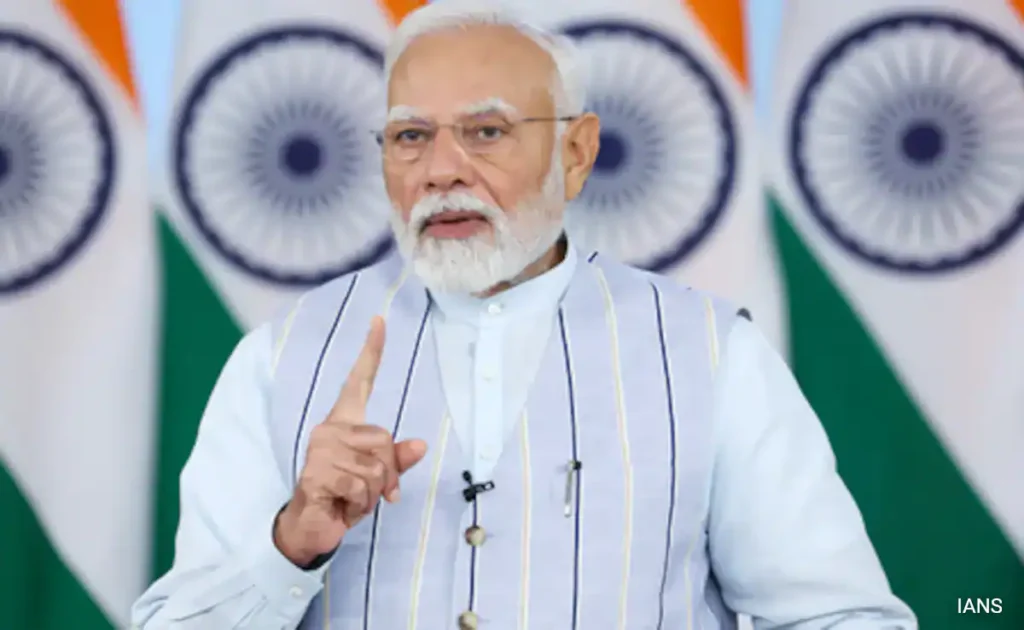India has entered a new era of high-speed transportation as Namo Bharat has officially become the fastest train in the country, breaking previous speed records and redefining the future of Indian railways. With its world-class design, cutting-edge technology, and focus on passenger comfort, Namo Bharat is more than just a train – it’s a symbol of India’s progress toward next-generation infrastructure and rapid urban connectivity.
Namo Bharat: India’s Pride on Rails

Launched as part of the Regional Rapid Transit System (RRTS) project, Namo Bharat represents a significant milestone for Indian railways. Designed to run at speeds of up to 180 km/h, it outpaces other premium trains such as Vande Bharat Express, Gatimaan Express, and Shatabdi Express.
The train is currently operating on the Delhi–Meerut corridor, which is the first fully functional RRTS route. With this achievement, India joins the league of nations with modern rapid rail networks, comparable to those seen in Europe and East Asia.
Key Features of Namo Bharat
1. Unmatched Speed and Efficiency
Namo Bharat’s operational speed of 160–180 km/h makes it the fastest train in India, drastically reducing travel time between major cities and towns. The Delhi–Meerut journey, which once took over an hour and a half, can now be completed in just 55 minutes.
2. World-Class Passenger Experience
The train offers a state-of-the-art passenger experience, with comfortable seating, Wi-Fi connectivity, automatic doors, and advanced climate control. It also includes premium business-class coaches for those seeking extra luxury.
3. Green and Sustainable
In line with India’s sustainability goals, Namo Bharat is designed as an energy-efficient system. Its regenerative braking system ensures lower carbon emissions, and the use of electricity over diesel makes it an eco-friendly choice.
4. Safety First
The train comes with cutting-edge safety features, including collision-avoidance technology, continuous speed monitoring, and advanced signaling systems that comply with international safety standards.
Economic and Social Impact
The launch of Namo Bharat as India’s fastest train is expected to have a transformational impact on the economy and society:
- Boost to Regional Economy: Faster connectivity will spur growth in Tier-2 and Tier-3 cities along the route.
- Job Creation: Thousands of jobs have been generated during the construction phase and will continue in operations, maintenance, and supporting services.
- Urban Decongestion: Rapid rail will reduce dependency on road transport, thereby cutting down traffic congestion and pollution in major urban areas.
- Real Estate Growth: Areas along the Namo Bharat route are expected to see a surge in real estate development due to improved accessibility.
Comparison with Vande Bharat
While Vande Bharat Express has been a game-changer for semi-high-speed travel in India, Namo Bharat takes things a step further.
| Feature | Vande Bharat Express | Namo Bharat |
|---|---|---|
| Max Speed | 160 km/h | 180 km/h |
| Technology | Train-set (EMU) | Fully integrated rapid rail |
| Route Focus | Intercity | Regional high-speed corridors |
| Comfort | Premium seating | Business class + wider amenities |
| Operational Goal | Faster than conventional express trains | Seamless rapid transit with metro-like frequency |
This comparison highlights why Namo Bharat is seen as the next leap forward in Indian train travel.
Government’s Vision
The launch of Namo Bharat aligns with the Indian government’s Gati Shakti plan, which focuses on improving logistics, connectivity, and infrastructure development across the nation.
Prime Minister Narendra Modi has called Namo Bharat a “game-changer for Indian transportation,” emphasizing that it will reduce travel time, enhance productivity, and connect talent pools with economic hubs.
Challenges Ahead
While Namo Bharat is a historic milestone, there are challenges to scaling this project across India:
- High Capital Investment: The construction and rollout of high-speed corridors require substantial funding.
- Land Acquisition: Large-scale infrastructure projects often face delays due to land acquisition issues.
- Maintenance Costs: Advanced technology means higher maintenance costs and the need for skilled technicians.
- Public Awareness: Encouraging people to shift from road transport to rapid rail will require consistent campaigns and affordable ticket pricing.
Future Expansion Plans
The success of Namo Bharat is expected to pave the way for similar RRTS corridors across India, including:
- Delhi–Alwar Corridor (via Gurugram)
- Delhi–Panipat Corridor
- Delhi–Haryana–Rajasthan Expansion Plans
Once these corridors are completed, the National Capital Region will have a network of high-speed, high-frequency trains, reducing reliance on private vehicles and improving air quality.
Global Comparisons
With Namo Bharat’s success, India is positioning itself alongside countries with advanced rail systems like:
- Japan’s Shinkansen (Bullet Train)
- France’s TGV
- Germany’s ICE
- China’s CRH High-Speed Rail
Although India’s trains are not yet operating at “bullet train” speeds (300+ km/h), Namo Bharat is an important stepping stone toward achieving that goal in the near future.
Public Reaction
The launch of Namo Bharat has been met with excitement and pride across India. Social media has been abuzz with passengers sharing their first experiences, praising the smooth ride quality, cleanliness, and time efficiency.
Commuters are hopeful that similar services will soon connect other regions, making rapid rail a mainstream mode of travel for work, education, and tourism.
Conclusion
With Namo Bharat officially crowned as India’s fastest train, the country has taken a giant leap toward modern, sustainable, and efficient transportation. More than just a train, Namo Bharat symbolizes India’s commitment to infrastructure development, economic growth, and technological innovation.
As the network expands and more corridors become operational, millions of Indians will benefit from faster travel times, decongested cities, and better regional connectivity. Namo Bharat is not just a milestone for Indian Railways but a harbinger of the future – where high-speed, green, and passenger-centric mobility is the norm.

